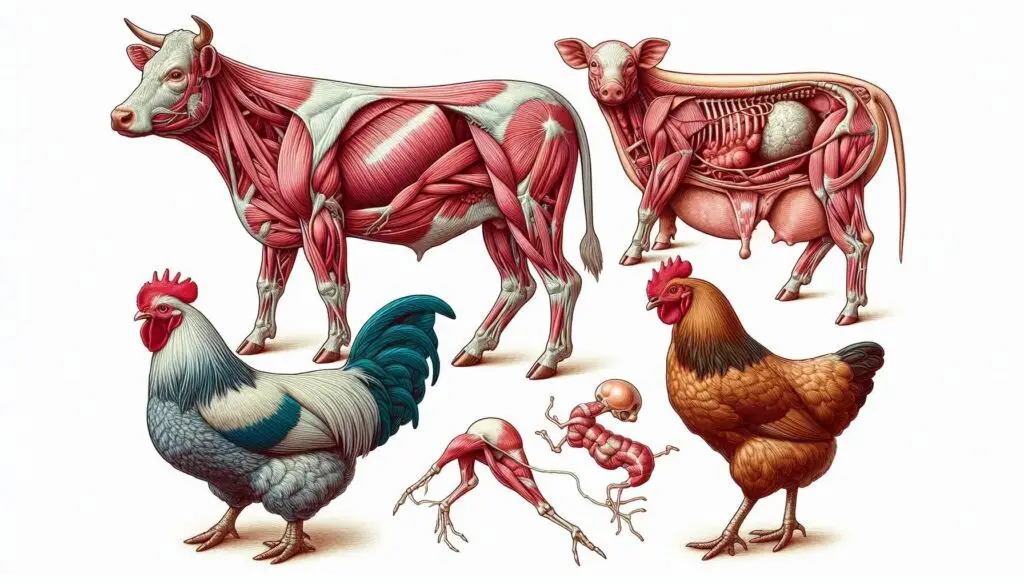Anestrus in Farm Animals: Diagnosis and Treatment

Anestrus is a significant reproductive challenge in farm animals, particularly in cattle. It refers to the absence of estrus (heat) cycles, which can lead to economic losses due to reduced fertility. Understanding the causes, diagnosis, and treatment of anestrus is essential for effective livestock management. This article will explore these aspects in detail, providing insights and practical solutions for farmers.
What is Anestrus?
Anestrus is a condition where female animals do not exhibit signs of estrus. This can occur due to various factors, including nutritional deficiencies, physiological issues, and management practices. In cattle, anestrus can significantly affect productivity. Farmers need to recognize this condition early to implement appropriate interventions.
Causes of Anestrus
Nutritional Deficiencies
One of the primary causes of anestrus is poor nutrition. Cows require adequate energy and nutrients to maintain reproductive health. A negative energy balance (NEB) often occurs during lactation or immediately after calving. When cows do not receive enough energy, their bodies prioritize survival over reproduction.
For more information on the importance of nutrition in livestock, you can visit The Importance of Nutrition in Cattle.
Physiological Factors
Physiological issues can also lead to anestrus. Conditions such as uterine infections (e.g., endometritis) and ovarian cysts disrupt normal estrous cycles. These conditions prevent the ovaries from functioning properly.
Postpartum recovery is critical for cows. If they do not return to normal cycling within 60 days after calving, they may be classified as having postpartum anestrus. Understanding this timeline helps farmers manage breeding schedules effectively.
For further reading on managing reproductive health in cattle, check out Reproductive Management of Beef Cattle.
Management Practices
Management practices play a crucial role in reproductive health. Prolonged suckling by calves can delay the return to estrus because suckling inhibits hormonal signals necessary for ovarian activity. Stressors like heat stress or difficult calving can also contribute to anestrus.
Diagnosis of Anestrus
Diagnosing anestrus involves several steps:
- Clinical Examination: Regular physical examinations help identify signs of estrous cycles or underlying health issues.
- Hormonal Assessments: Blood tests for progesterone levels determine if the ovaries are functioning normally. Low levels may indicate anovulation or inactive ovaries.
- Ultrasonography: This imaging technique visualizes ovarian structures and assesses follicular development. It aids in classifying types of anestrus.
Types of Anestrus
Anestrus can be classified based on underlying causes:
True Anestrus
True anestrus is characterized by inactive ovaries with no follicular development. It often results from significant nutritional deficiencies or severe physiological stress.
Subestrus
In subestrus, normal cyclic activity occurs, but estrous behavior is weak or undetected. This condition may lead to missed breeding opportunities.
Type I & II Anestrus
Type I and II anestrus are related to energy deficiencies and require treatment focused on improving nutritional status. Hormonal interventions may also be necessary.
Type III & IV Anestrus
These types involve specific ovarian conditions like follicular cysts or luteal persistence. Targeted hormonal therapies are essential for treatment.
Treatment Options for Anestrus
The treatment of anestrus involves a combination of management improvements and medical interventions:
Nutritional Management
Ensuring optimal nutrition during the transition period around calving is crucial for preventing anestrus. Providing high-quality forage and concentrates tailored to the animal’s stage of lactation helps maintain energy balance.
Farmers should monitor body condition scores (BCS) regularly to ensure that cows are neither too thin nor too fat, as both extremes can negatively impact reproductive performance.
For more details on nutrition strategies, refer to Nutritional Management for Reproductive Success.
Hormonal Treatments
Hormonal therapies are commonly used to stimulate estrous cycles in affected animals:
- Controlled Intravaginal Progesterone-Releasing Devices: These devices help regulate hormone levels and induce estrous cycles.
- GnRH Injections: Gonadotropin-releasing hormone (GnRH) injections stimulate ovarian activity and help synchronize estrous cycles.
- Prostaglandins (PGF2α): These hormones are used to induce luteolysis (the breakdown of the corpus luteum), allowing new follicular development.
Specific protocols like the OvSynch program facilitate timed insemination following hormonal treatment, enhancing conception rates.
For more insights into hormonal treatments, visit Hormonal Treatments for Reproductive Management.
Management Practices
Improving management practices can significantly reduce instances of anestrus:
- Reducing Suckling Intensity: Weaning calves earlier or implementing short-term weaning strategies can help restore normal estrous cycles.
- Stress Reduction: Minimizing stressors such as overcrowding and extreme temperatures supports overall reproductive health.
Regular monitoring and record-keeping of estrous behavior improve detection rates and allow timely interventions.
Monitoring and Evaluation
Ongoing monitoring is vital for assessing the effectiveness of treatments for anestrus:
- Record Keeping: Keep detailed records of breeding dates, calving intervals, and body condition scores.
- Regular Health Checks: Conduct regular veterinary examinations to identify any underlying health issues promptly.
- Evaluate Nutritional Programs: Adjust feeding strategies based on changing needs throughout different production stages.
Conclusion
Anestrus poses significant challenges for farmers managing livestock reproduction. By understanding its causes and implementing effective diagnostic and treatment strategies, farmers can enhance reproductive efficiency and overall productivity in their herds.
Addressing nutritional deficiencies, utilizing hormonal treatments, and improving management practices are essential steps toward mitigating this condition. Regular monitoring will ensure that interventions are effective, leading to healthier animals and increased profitability.
More from Animal Reproduction:
https://wiseias.com/semen-dilution-in-bulls/
https://wiseias.com/semen-diluter-composition-bulls/





Responses